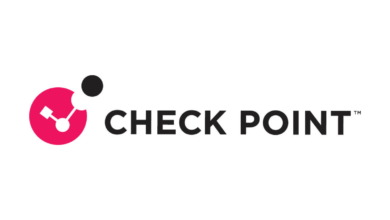Revolutionizing Cyber Resilience: Optimas AI Leads the Charge in AI-Driven Cybersecurity Solutions at GISEC 2024

Tell us about your core business and objectives
Optimas specializes in AI-driven cybersecurity solutions, focusing on the development and implementation of the Business Technology Exposure and Resilience (BTER) framework. Our core business revolves around providing cutting-edge, AI-enhanced tools and strategies designed to quantify, manage, and mitigate cyber risks effectively. The primary objective is to empower organizations across various sectors, including telecom, healthcare, and education, to navigate the digital landscape securely. By aligning our solutions with the UAE’s National Strategy for AI 2031 and Cyber Security Strategy, we aim to support secure cyberspace for all, promote the responsible use of AI, and drive sector-specific advancements. Our mission extends to fostering digital safety and resilience, ensuring businesses can thrive in an increasingly interconnected and technologically dependent world.
How can businesses effectively measure the ROI of their cybersecurity investments?
In the vast landscape of cybersecurity, where businesses navigate through a selection of over 14,000 products across 16 broad categories, measuring the ROI on cybersecurity investments poses a significant challenge. The diversity and complexity of tools available make it difficult for businesses to assess the comprehensive value of their cybersecurity strategies. The solution lies in adopting a single, comprehensive unified view that consolidates insights across all cybersecurity efforts. This approach enables leaders to make informed decisions by providing a clear picture of how each investment contributes to the overall security posture. By leveraging a unified platform, businesses can not only streamline their cybersecurity operations but also evaluate the effectiveness of each component in mitigating risks, preventing breaches, and ensuring compliance. This holistic view is crucial for understanding the ROI, as it allows for the measurement of tangible benefits such as reduced incident costs, compliance penalties avoided, and the intangible value of enhanced brand trust and customer loyalty. Ultimately, achieving this clarity requires a strategic shift towards integrated cybersecurity management systems that offer real-time analytics, risk quantification, and actionable insights, empowering businesses to optimize their cybersecurity investments effectively.
How should businesses prioritize their cybersecurity efforts in a landscape of ever-evolving threats?
In a landscape characterized by rapidly evolving threats, businesses must adopt a dynamic and strategic approach to prioritize their cybersecurity efforts effectively. The key is to implement a risk-based prioritization framework, focusing on identifying and protecting critical assets that, if compromised, could have the most significant impact on the business’s operations, reputation, and bottom line. This approach involves continuous risk assessment, leveraging advanced analytics and AI to monitor the threat landscape and predict potential vulnerabilities. Additionally, aligning cybersecurity strategies with the organization’s broader business objectives and regulatory requirements is crucial for ensuring comprehensive protection and resilience. Investment in employee training and awareness programs is also essential, as human error remains a significant vulnerability. Emphasizing agile and adaptable security measures that can be swiftly adjusted in response to new threats is imperative. Collaboration within industry groups and with cybersecurity agencies can provide valuable insights into emerging threats and best practices. By prioritizing efforts based on risk, aligning with business goals, investing in human capital, and remaining adaptable, businesses can navigate the complex cybersecurity landscape more effectively, ensuring robust defense mechanisms against ever-evolving threats.
How are you helping businesses better manage their cyber risk and governance?
Optimas is revolutionizing the way businesses manage cyber risk and governance by providing a single, comprehensive, unified view designed to empower C-suite leaders with crucial insights for informed decision-making. Our platform integrates across the entire Enterprise context suit which includes Business context, Application context, Technology context, and Security context, offering a centralized dashboard that highlights key metrics, vulnerabilities, threats in real-time, and quantifies the exposure. This holistic perspective enables executives to understand their organization’s cybersecurity posture at a glance, facilitating strategic planning and resource allocation. Furthermore, our approach incorporates autonomous resilience, leveraging AI and machine learning to predict potential threats and automatically implement protective measures. This proactive stance not only enhances an organization’s ability to withstand cyber incidents but also ensures continuous compliance with evolving regulations and standards. By streamlining risk management processes and embedding autonomous resilience, Optimas is at the forefront of helping businesses navigate the complex cybersecurity landscape, ensuring they can focus on growth and innovation with confidence in their digital security.
What are the specific compliance challenges when using AI in cybersecurity, and how can these be addressed?
The integration of AI in cybersecurity introduces specific compliance challenges, primarily due to the dynamic nature of AI algorithms and the potential for bias, data privacy issues, and accountability. One of the critical pitfalls in the current approach is the lack of transparency and explainability in AI-driven decisions, which can complicate compliance with regulations like GDPR, which mandates clear explanations of automated decision-making processes. Additionally, ensuring the integrity and confidentiality of sensitive data processed by AI systems poses significant challenges. BTER, or Business Technology Exposure and Resilience framework, addresses these pitfalls by incorporating a comprehensive governance structure that emphasizes ethical AI use, data protection, and compliance as core components. BTER provides a framework for evaluating and managing the risks associated with AI in cybersecurity, ensuring that AI applications are developed and deployed in a manner that is transparent, secure, and compliant with relevant regulations. It emphasizes continuous monitoring and assessment of AI systems to identify and mitigate biases, vulnerabilities, and other issues that could lead to compliance risks. By leveraging BTER, businesses can navigate the complex landscape of AI in cybersecurity more effectively, ensuring that their use of AI enhances their security posture without compromising on compliance or ethical standards. This approach not only addresses the specific challenges posed by AI but also aligns with broader organizational goals for risk management and digital resilience.
How do you foresee the evolution of AI impacting future regulations and compliance requirements in cybersecurity?
The evolution of AI in cybersecurity is set to significantly influence future regulations and compliance, introducing more stringent guidelines around the ethical use of AI, data privacy, and algorithmic transparency. Regulations will likely demand greater explainability of AI decisions, stricter data protection measures, and standards for AI system resilience against manipulation. Frameworks like BTER, which focus on ethical AI deployment and robust data protection, will be crucial for organizations navigating these changes. This shift will require proactive adaptation to ensure compliance with evolving standards, emphasizing the need for transparency, fairness, and security in AI-driven cybersecurity solutions.
What are the ethical considerations companies should keep in mind when deploying AI-driven cybersecurity solutions?
When deploying AI-driven cybersecurity solutions, companies should prioritize several ethical considerations to ensure responsible use. First, transparency is crucial; organizations must understand how AI makes decisions, especially in critical security contexts. This includes being able to explain AI’s reasoning to stakeholders and regulatory bodies. Privacy protection is another vital aspect, as AI systems often process vast amounts of personal data. Ensuring that these systems adhere to data protection laws and ethical standards is essential. Fairness and bias mitigation are also critical; AI models should be regularly assessed and adjusted to prevent discriminatory outcomes based on skewed or biased data. Lastly, accountability remains paramount. Organizations should establish clear guidelines on human oversight of AI systems and delineate responsibility for AI-driven decisions, ensuring ethical deployment aligns with broader corporate values and societal norms.



